
During the COVID-19 pandemic, home-based learning was introduced in all schools to make learning as seamless as possible at home, without the need for physical interaction in close proximity to other students.
This had students all over Singapore take part in home-based lessons and online tuition instead of physical lessons.
You’d probably seen your child cooped up at home, staring into the computer and doing worksheets on the table.
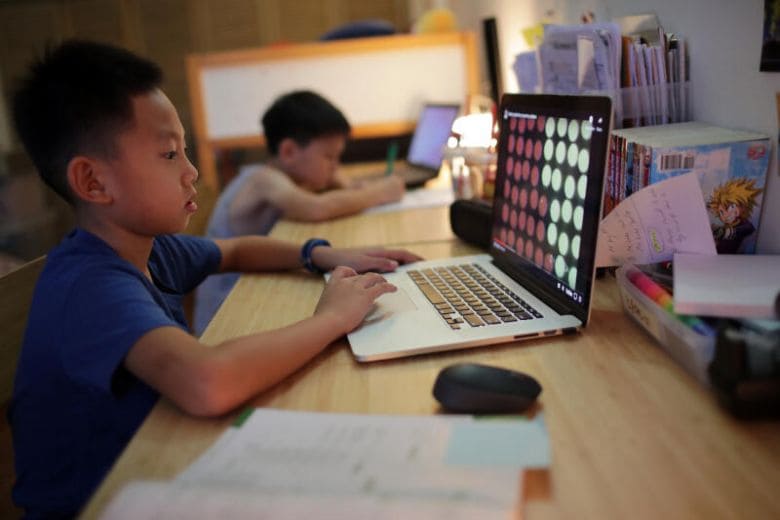
As time passes, some of the changes introduced during the pandemic may not be implemented any longer. However, I predict that home-based learning will continue to exist in some part of your child’s education.
In this case, what can you as parents do to help your child continue to learn effectively at home and confidently succeed in the examinations?
We’ve taken the time to dissect what home-based learning really is and find out what steps you can take to enable your child to learn better.
Additionally, we’ll also recommend resources to make home learning more productive.
Follow me as I guide you and your child to excel in home-based learning. Let’s go!
1. What is Home-Based Learning (HBL)?
2. How to Prepare Your Child for Home-Based Learning?
3. How to Manage Time Wisely during Home-Based Learning?
4. Tips & Tricks to Improve your Kid’s Productivity during Home-Based Learning
5. Exams during Home-Based Learning: How to Prepare for Online Tests and Online Exams
6. Additional Online Learning and Online Tuition: What else can you learn from home?
What is Home-Based Learning (HBL)?
Put it simply, home-based learning is having lessons, classroom interaction and lesson materials accessible from home.
The school’s home-based learning may also come with a timetable that your child has to adhere to, hence your child will not be doing it at their own pace.
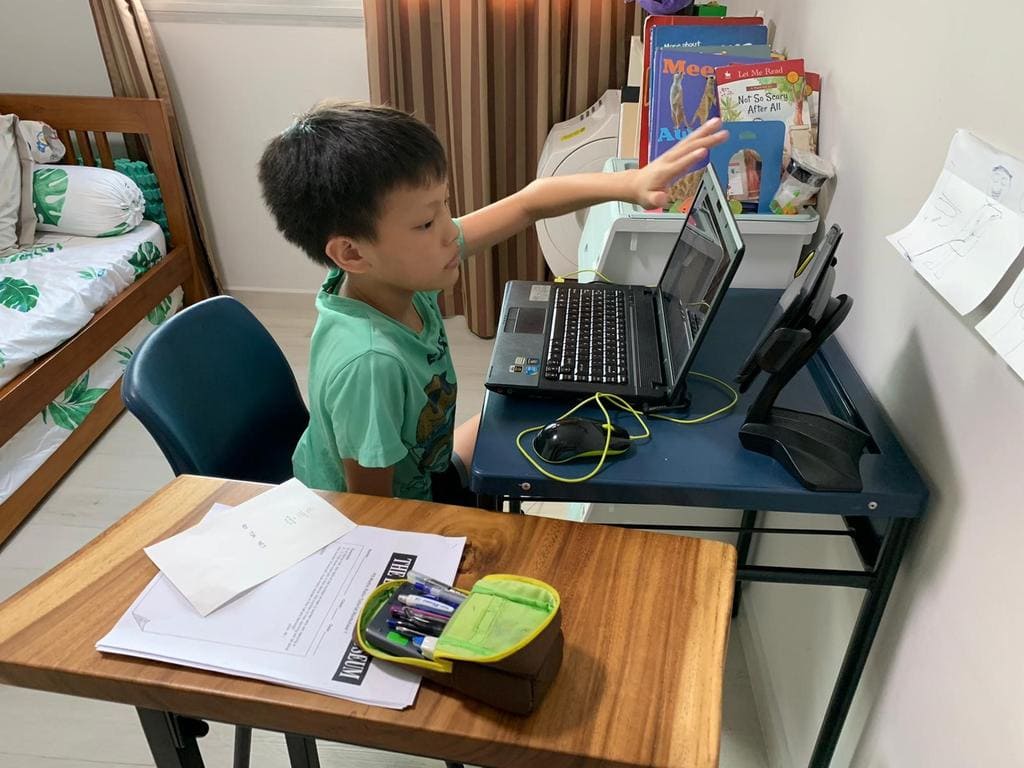
For almost all students from Primary schools, Secondary schools, Junior Colleges, to even tertiary institutions, home-based learning will be a way of life — at least for the next few months.
What will my child do in home-based learning? According to the Ministry of Education, home-based learning is made up of three components:
- E-Learning: Online live lessons, recorded lessons, videos and content will be shown through online learning platforms and online assignments
- Emails: Distribution and submission of notes and worksheets
- Hardcopy Assignments: Learning and doing exercises based around existing hardcopy assignments, such as textbook questions or worksheets
Every class is conducted differently, so your child may have a different home-based learning plan.
The Importance of Home-Based Learning
Now that we’re partially resuming schools, is home-based learning really necessary?

Well, in order to prepare your children for the stresses of the Singapore education system, there should be minimal disruption to your child’s schooling.
Despite having disruption to full-time face-to-face lessons in schools, your children should not be affected, and can still continue to learn at home. Stability in education can help our children learn more and learn fast.
This is especially true for our PSLE-taking students, Secondary 4 and 5 O-Level and N-Level students, and JC2 A-Level students.
They do not have the time to wait around for schools to resume fully as they prepare for their final examinations.
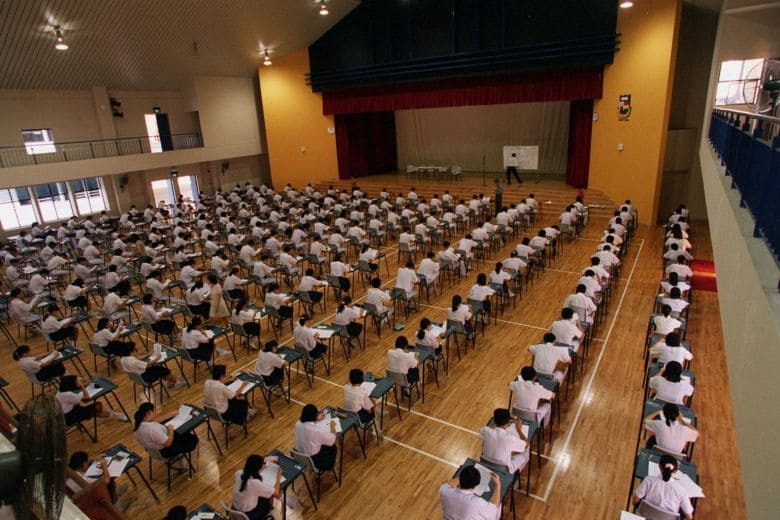
Besides, with more technology being used in the classroom, it is very likely that online learning will be a huge part of your children’s future education.
This can be seen in our local universities, where students are required to take some online-only modules.
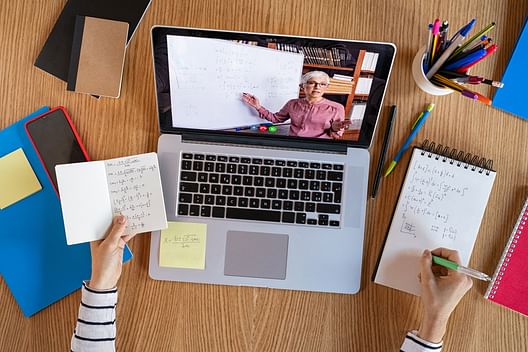
Making the shift to home-based online learning gives your children experience in online learning, making them well-prepared for the shift towards online learning in the future.
Home Learning for Kids: How do they differ?
Currently, home-based learning consists of online lessons, assignments and worksheets.
In this case, how does home learning work for preschoolers, at a time when they’re mainly learning through play?
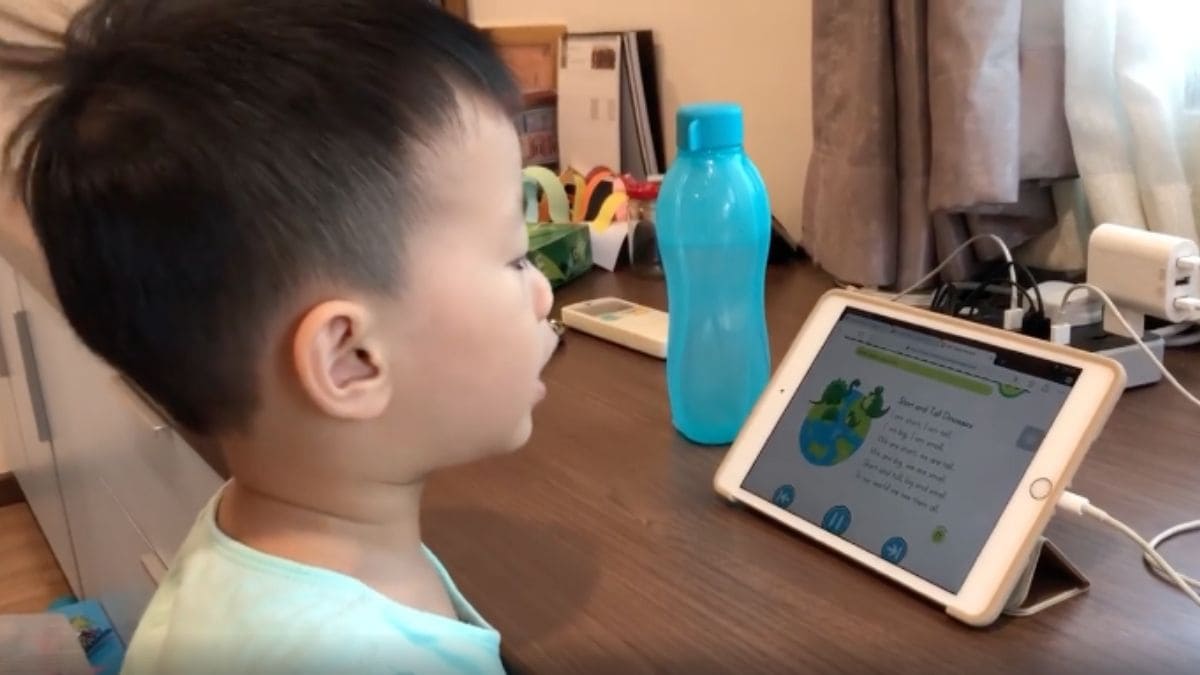
Online Learning for Preschool Children
For your preschool children, home-based learning will be different as you need to be present to guide your child.
The Early Childhood Development Agency (ECDA) has put together a list of home-based activity resources developed by kindergartens in Singapore. Prominent operators EtonHouse, MOE Kindergartens, My First Skool, PCF Sparkletots, and E-Bridge have contributed to this list of resources.

Parents can go through these free learning resources to teach your children at home.
Every learning resource will come with clear instructions on the lesson objectives and what the parents can do. Videos and other printable worksheets are also included in some lessons.

More resources will be added every Monday, so there’s an unlimited amount of learning content available!
The Differences in Home-Based Learning
Home-based learning has some key differences that make it both advantageous and disadvantageous. Knowing them can help you better understand home-based learning and adapt your child to it.
Our children are more sleep-deprived than ever, with this lack of adequate sleep causing problems in learning. With home-based learning, your child will have more time to sleep.
Besides, you also don’t have to worry about their school uniforms, heavy backpacks, pocket money, or their antics at school.

However, it also comes with its own set of challenges.
Firstly, your child may find it difficult to adjust to the new learning environment at home.
Secondly, teachers will have less control and guidance over your child as it’s hard to supervise and check on their learning and attentiveness.
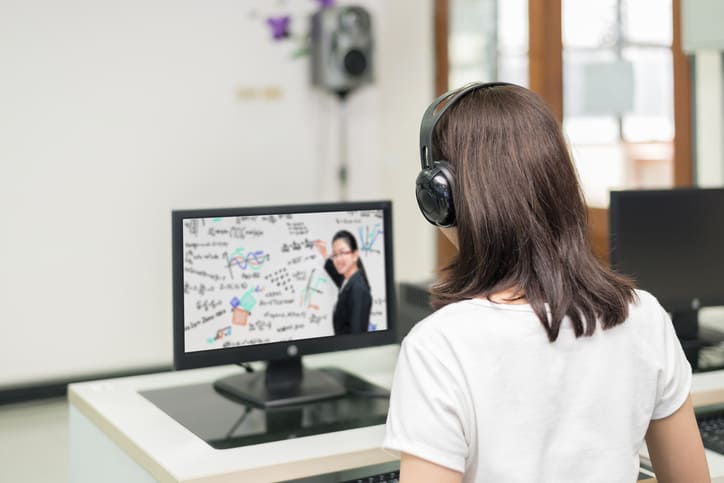
Lastly, as home-based learning uses computers, your child’s skills in using them can affect their learning.
There may also be other hardware, software or networking problems that hinder their learning.
If you’re looking for new computers for your children, you can check out our article on education discounts for laptops.
Clearly, the transition to home-based learning is not as easy as it seems. Both you and your child have to take actions to adjust yourselves comfortably to learn at home.
How to Prepare Your Child for Home-Based Learning?
Making home-based learning effective is not as simple as just sitting in front of the computer and expecting your child to get going immediately.
With such a drastic change in the environment, the lack of friends, and the use of technology, your child needs time to settle in before they can learn well.
In addition, your home may not be well-suited for home-based learning, and if you don’t prepare your child’s home-based learning environment, they will find it harder to learn.
Create an effective learning environment
Just like how schools and offices are designed for productivity, your child should also have a study corner specially made for their home-based learning.
Having a special learning corner helps them ease into the new changes and requirements.
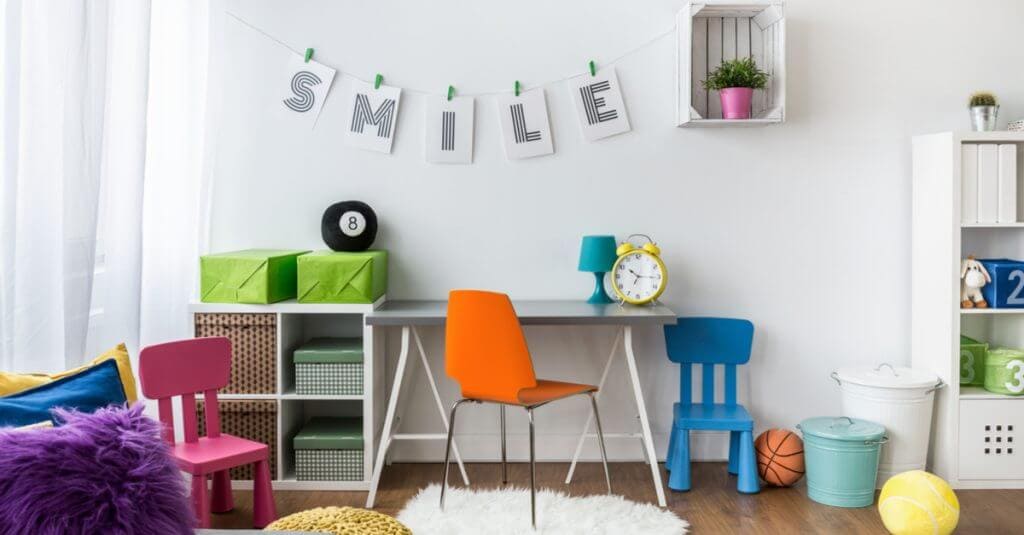
An effective learning environment is also designed to help a child pay attention, learn faster, and learn better.
Keep in mind that your child has to sit at this desk for hours a day, possibly for the next semester. It is definitely worth the time to think about how to make it more conducive for learning.

Additionally, with this special study corner, they will understand that they are not supposed to play when they’re sitting at the study desk. You’d then have an easier time motivating them to study.
Do yourself a favour by separating your house in sectors for studying, playing and living.
Set up a productive study space
In your house, establish a study corner that can fit a table and a chair. Let your children know that over in this corner, it is strictly a study space.
Take note that this separate study space is not your existing dining table or on the sofa. It is better to be an area only for studying and learning.
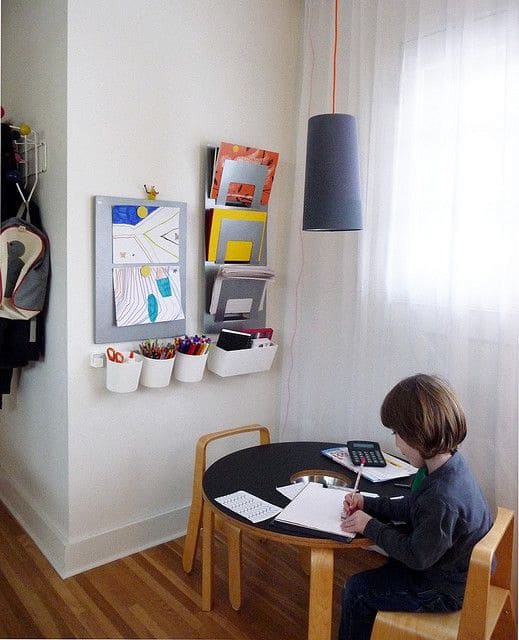
In general, there are five characteristics of a productive study space:
1. Free of distractions
2. Easy access to learning materials
3. Good lighting
5. Good ventilation and temperature
4. Comfortable for learning (not for resting)
A Distraction-free Learning Space: How to Organise the Study Table
Some people might say that “an empty table is an empty mind”. I disagree with that as I strongly feel that clutter does not spark joy.
Your study desk does not need to have stuff that will distract your child from paying attention. When the study desk is full of irrelevant documents, stationery, toys or even trash, there’s no space left for studying.

Your child, in order to fit all their learning materials on the table, will have to put them all over the place. This makes it highly disorganised, and they’ll have difficulties finding it later.
Get some organisation folders to keep their learning materials packed. Clear the desk of any items that they do not need for their learning that day.

There are other distractions that can come from beyond the desk.
Their study corner should preferably be out of sight of any television, toys or entertainment you have at home.
You should also refrain from watching the television or playing music around them while they’re doing their home-based learning.
It takes two hands to clap, and as parents, you’d need to give your child the most conducive learning environment at home.

Looking for more parenting tips? We have some additional tips from our extensive blog.
Easy Access to Learning Materials
You wouldn’t want your child to leave their desk, walk into their bedroom and reach into their school bags just to get a piece of paper or pencil.
Everything that they require for lessons should be easily accessible on the table, at any given time.

If their home-based learning requires additional materials such as plain paper, place some on the desk so that they can reach it without leaving the desk.
Keeping them at their desks will make it easier for them to concentrate on the work on hand.
Good Lighting
Even though the computer screen used for home-based learning is bright enough to be used in the dark, it is better to have a brightly-lit study corner.
Using the computer in the dark can cause eye strain, making it harder for them to pay attention to the screen.

Likewise, as they will have to do their work on paper and books, your child will also need good lighting in order to see what they’re writing.

If your child’s study corner is not well-lit, you can consider getting a desk lamp. These affordable table companions will have a night and day difference (literally) in your child’s productivity.
Good Ventilation and Temperature
Can you imagine your child sweating throughout the day, making the chair soak up all the sweat?
Imagine the smell after a week.

I’m sure you do not want that to happen inside your house. This is why their learning space should be well-ventilated and cooling.
There’s no need for air-conditioning, but at the minimum, it should be located near an airy window or with a fan blowing towards it.
Comfortable for Learning
When you have the basics for a study corner set up, you can look into making it more comfortable for your child.
As they’ll be sitting there for hours, additional comforts like a padded chair will go a long way into allowing them to sit still and not be restless.
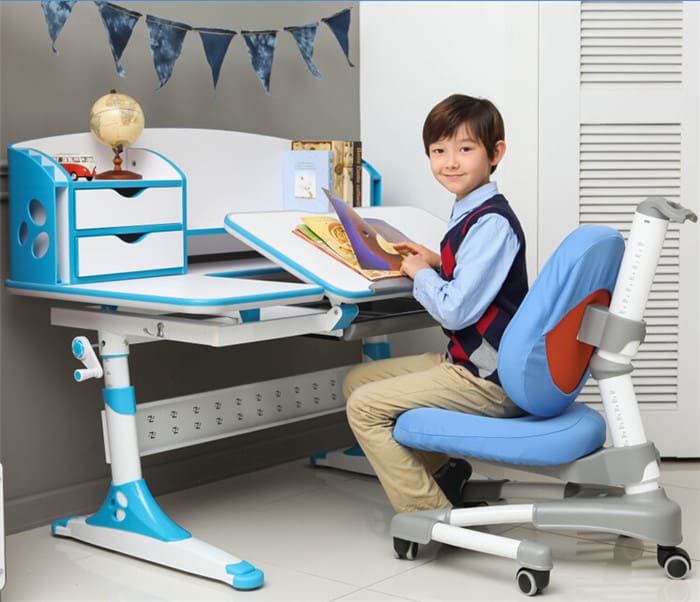
Think about what your workplaces and offices have done to make it more comfortable for you to work.
How about a cup of Milo? Footrests? A chair with lumbar support?
Don’t rush out to splurge on all these recommendations — your child most likely does not need them to study well. But, if you have the resources, they can be helpful, definitely.
Just take note not to make it too comfortable for your child, such that they fall asleep on the desks.

How to Manage Time Wisely during Home-Based Learning?
In school, there is a fixed timetable for all students to follow. If your child does not have the discipline to follow them, you’d be sure their teachers will be there to make them follow it.

However, at home, it is a different situation.
Without the disciplinarian around, they may think that the house is a lawless frontier.
When you are busy with something else at home, they may take the opportunity to sneak out of their learning space to play, sleep or avoid studying.
You can avoid all these by being firm, and you should enforce a daily schedule at home that your child has to follow.
Home Learning Time Management
What will help your child manage their time wisely? Planning.
Planning ahead to develop a daily structure, timetable and goals allows your child to see what they need to fulfil.
This is similar to what they’ve been doing in school, so there shouldn’t be any surprises coming from them.

If you have a daily planner lying around at home, you can use them to plan out your child’s time. It doesn’t even need to be made for this year.
Spend the time to make it neat and tidy, so that your child will find it easier to read and follow.
Time management is also not just about the work done.
While it is designed to increase your child’s productivity, you need to give them rest and playtimes, as well as rewards for following through.
You can definitely spare some time in before and after home-based learning for fun. They’re kids after all — they need their playtime.
As long as they understand the need to study, and that there’s a reasonable study-play balance, I’m sure they’ll try their best to adhere to your timetable.
Creating a Daily Home Schedule
Planning your child’s daily home schedule will not be effective if you’re the only one doing it.
Bring your child into the planning process and hear them out on what helps them study, and what thoughts do they have about your plans.

Most Primary schools in Singapore have home-based learning schedules. You should incorporate them into your child’s time management planning.
As you plan your child’s schedule, you can use this opportunity to learn more about them.
Talk to them about what interests and dislikes they have, goals, wishes or any other activities they’d like to try out.
Afterwards, you can give them a couple of hours each day to explore them. Set daily objectives or weekly goals that they can do, such as learning the piano, amount of chores done, or home exercises.

We’ve drafted out a sample daily home schedule you can use for primary school students.
Take note that your child’s school may differ in its home-based learning hours, or you do not have an online tutor for them, but in general, this is what they should have in terms of study-play balance:
Recommended Balanced Timetable for Primary School Children
| Time | Activity |
| 7am to 8am | Wake up, wash up, and a simple breakfast |
| 8am to 10.30am | Home-Based Learning |
| 10.30am to 11am | Break |
| 11am to 12pm | Home-Based Learning |
| 12pm to 12.30pm | Lunch |
| 12.30pm to 2pm | Home-Based Learning |
| 2pm to 3pm | Playtime |
| 3pm to 4.30pm | Revision and Homework |
| 4.30pm to 6pm | Playtime or Exercise |
| 6pm to 7pm | Dinner |
| 7pm to 9pm | Tuition |
| 9pm to 10pm | Objective / Goal |
| 10pm to 7am | Sleep |
As young students have short attention spans, it’s important to keep study periods short and stagger them. Introducing lots of rest and play time in between keeps them motivated.
Tips & Tricks to Improve your Kid’s Productivity during Home-Based Learning
Whether it is home-based learning, online learning or online tuition lessons, they all have one thing in common — your child will have to sit at the desk, in front of the computer, for these learning to take place.
Other than your learning corner set-up (which we’ve covered at the top), are there any other tips and tricks to help your child stay focused and boost their productivity?

Being the #1 blog on education and parenting tips in Singapore, we looked all over the Internet to find tips on enhancing productivity.
We’re excited to say that we have compiled our 8 tips and tricks to improve your child’s e-learning experiences at home. Here’s it:
1. Eat healthy and lean throughout the day
Junk food, excessive sugar intake, and heavy meals will almost certainly give your child energy crashes.
Although it can be tempting to offer sweet treats to boost their attention, they’ll more likely experience a drop in energy level after their sugar high, and even fall asleep in front of the computer.

Give reasonably-sized portions, and use brain foods like fruits as treats instead.
2. Stand up
Are the eyelids getting heavier? Standing up may help.
When they stand up, their sleepiness will be halted as they’d need to concentrate on standing upright.
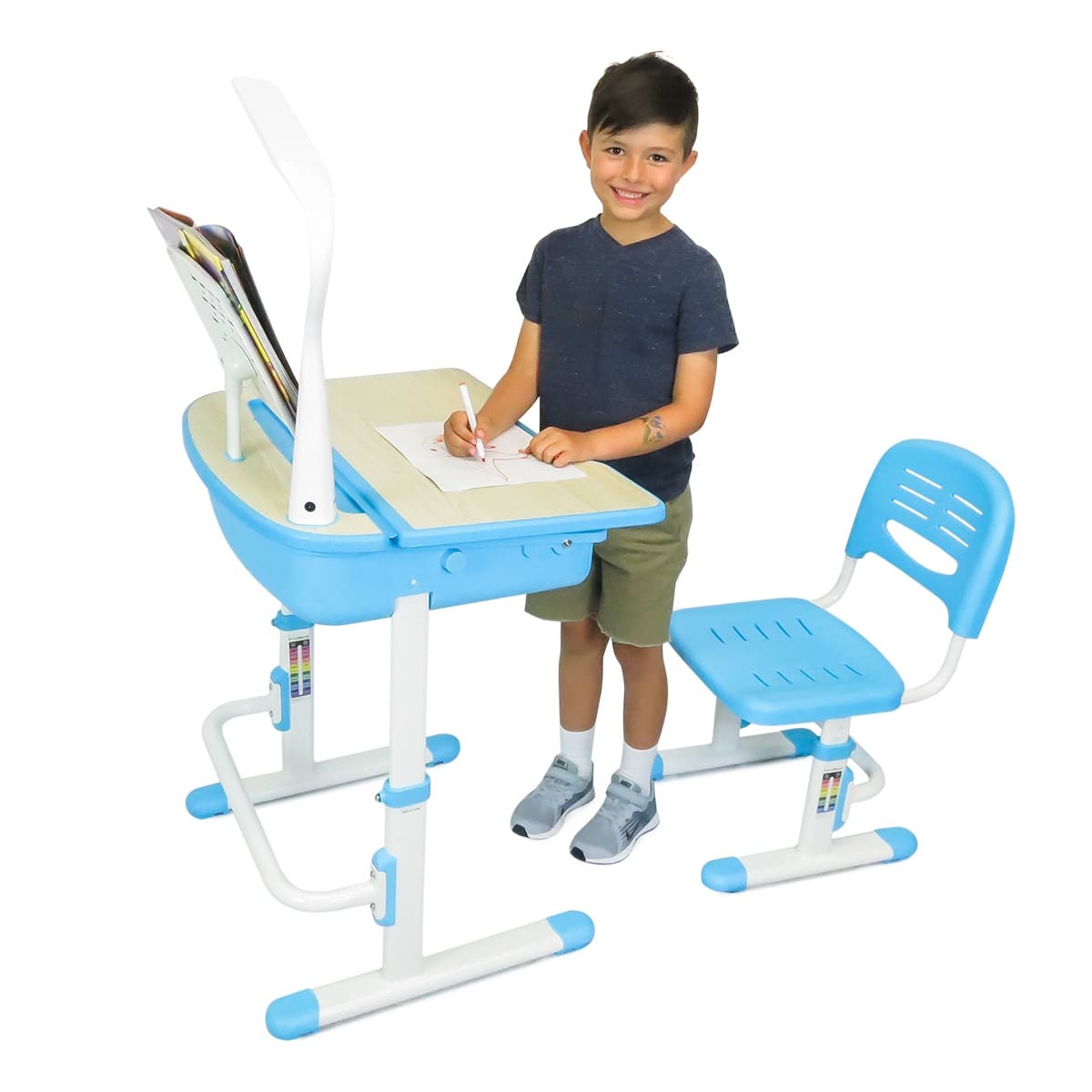
Also, by introducing some minor movement in your child’s home-based learning routine, you can keep their developing bodies moving and active.
3. Understand how long you need to “wake up properly”
Everyone has their own productivity peak after waking up. Even after a comfortable sleep, you’d need some time to start your day before you start grinding the mental gears again.
Personally, I’ll need about 1.5 hours between waking up and working at full-speed.

Try to see how long your child requires between waking up and having 100% attention in front of the computer and tweak their daily schedule to give them what they need to hit the ground running.
4. Use music to inspire you
Go over to YouTube and search for “study music”. These ambient sounds are composed to help you focus on your task and motivate you to do more.

These study music may not work on all people, so see if your child finds them distracting or motivating.
For me, they’re a great way to set my tempo in completing a heavy task and to cut out distracting background noises.
5. Manage time with the Pomodoro Technique
Does your child take too long to finish a seemingly easy task? Your child may lack the time management skills to complete it on time.
In order to solve this, you can use the Pomodoro Technique to help them with time management.
Essentially, you’ll break up complicated work into periods of 25 minutes, and try your best to finish each task within 25 minutes.

This is a great way to teach your child how to work under time pressure. You can start by using this online Pomodoro Technique timer.
6. Let off steam by exercising
To keep your child’s stress levels low and minimising their restlessness, get them to exercise. Exercising will clear your kid’s mind and keep them focused on their desk.

From short brisk walks, push-ups, jumping jacks, to even stair climbs, you can have many different exercises done in the comfort of your house.
7. Record lessons to review them later
We don’t always absorb information on the first attempt. With online learning, the lessons could even be interrupted by distractions at home or a jittery internet connection.

You can use your computer’s built-in screen recording tool to record lessons so that if your child misses out on key concepts taught, they can always go back to the recordings to look at them again.
8. Motivate, Encourage, Inspire
There is no limit to the number of motivations, encouragements and inspirations you can give to your child.
Learning is difficult, so you should always push them to do better with your love and words.
When do you dish out a compliment? It can be as frequent as the end of their daily home-based learning, or when they can do something simple like sitting at the desk attentively.

Your child needs to know that they are doing everything correctly, and there is no better person to let them know than you.
Exams during Home-Based Learning: How to Prepare for Online Tests and Online Exams
Although the national and school examinations like the PSLE and O Levels are still conducted physically, there is a chance that class tests will be conducted online.
Thus, you should know how to prepare your child for this different mode of examination.
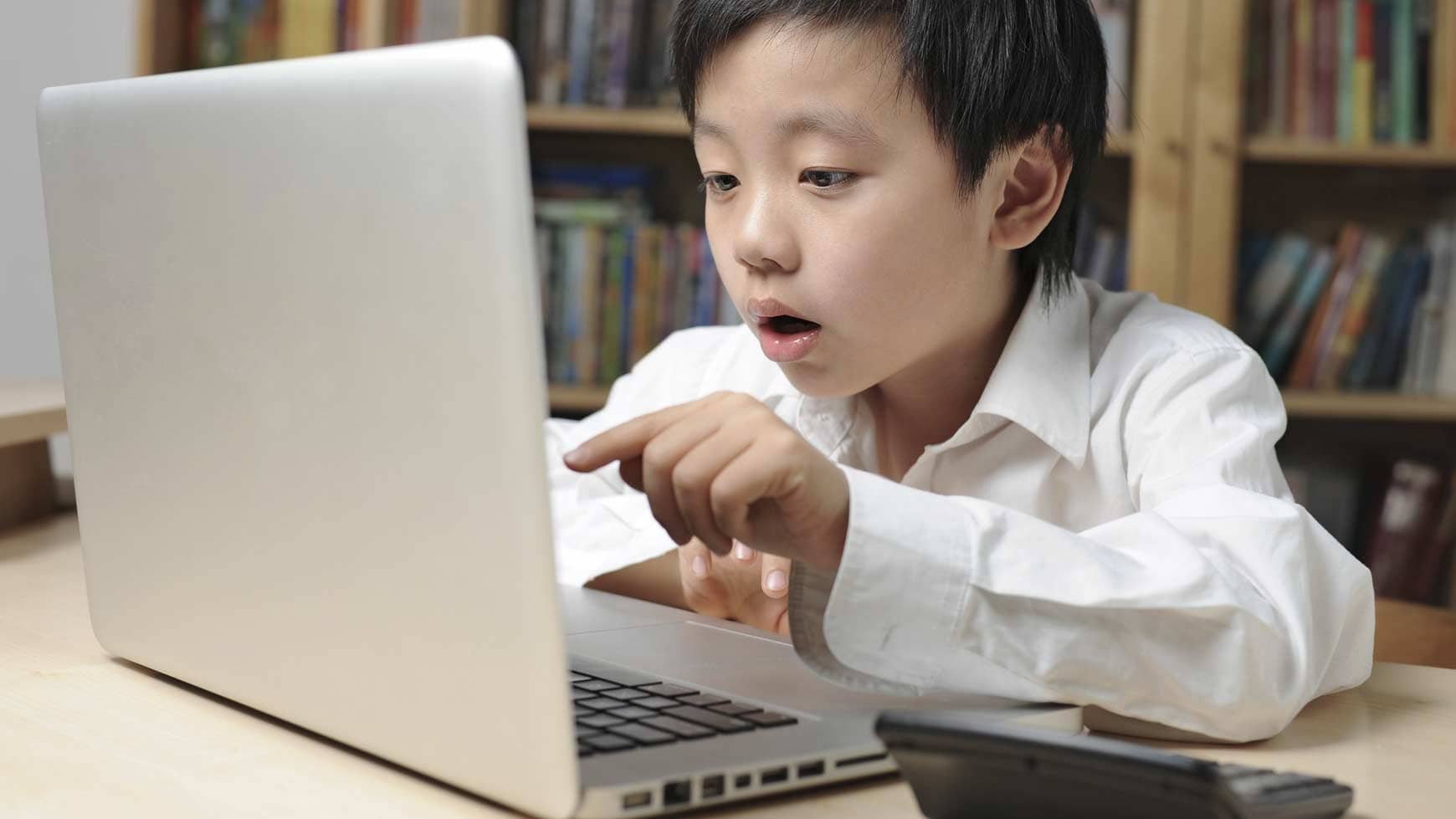
Meanwhile, over in the National University of Singapore, their final examinations have been shifted online. Some students cannot adapt to the online tests in time and do badly in these exams.
Online tests and exams are different since you’d be staring at a computer screen for the questions instead of paper.
A large number of people are more comfortable with paper-based reading and examinations, so this can be a problem if you’re not well adjusted.
How to Study for Online Exams and Online Tests
Regardless of the medium of examination, exams and tests check your understanding of the subject.
As such, fundamentally, you should use your existing study methods and techniques to prepare for online exams.
Our blog has an extensive collection of study tips for you to check out.

However, as these tests are conducted on computers, you should also practice using your computer.
If the test questions are displayed on-screen instead of paper, practice that instead of printing it out on paper.
For example, if your child is used to doing past year papers as practice, let them read off the screen and work out their solutions on paper instead.
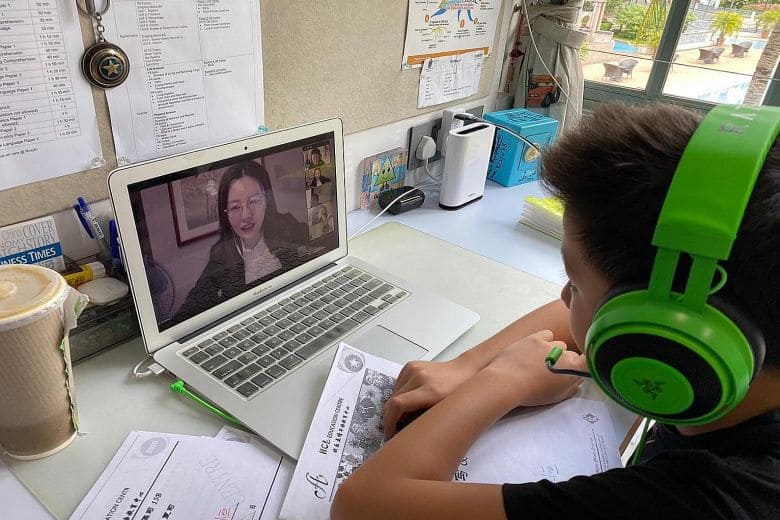
Similarly, if online tests require your child to type out their answers, let them practice their typing and improve their typing skills.
We all know that practice makes perfect, and practising these additional items on top of your usual examination revision routine will definitely make a difference to your child’s grades.
Tips for Online Exam and Online Test
Having tests and exams online has a few advantages.
Firstly, you’re never too far away from a clock. While exam halls and classrooms also have clocks, they’re usually analogue clocks that can be difficult to read when you’re in a hurry.
The clocks on your computer can even display seconds, making time management a breeze with online exams.
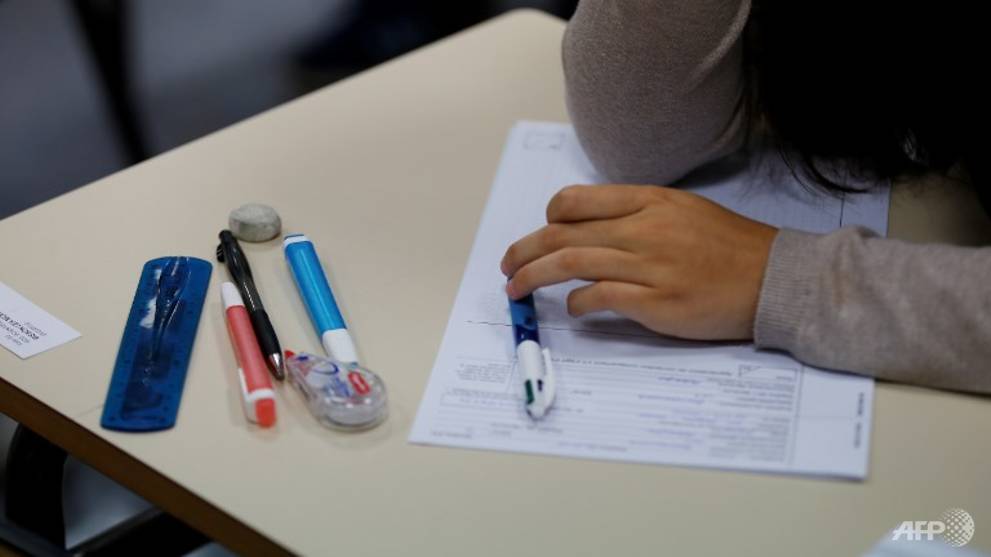
Secondly, doing the tests at home means that your child can maximise their comfort while doing the test.
Dress them up in their most comfortable (and productive) attire, give them a comfortable chair, and keep their desk area comfortably cooled.
Comfort is key to doing well in examinations. Since your child is at home, you have full control over their comfort. Why not maximise it?
Lastly, everyone has gotten eye strain from staring at computer screens for too long. If you find them constantly squinting and staring, remind them to look away every few minutes.

This allows them to relax their eyes, clear their minds, and calm themselves down momentarily.
The last thing you’d want is for them to feel frustrated at their eye strain and stress themselves out over it.
Cheating on Online Exams
Parents, you’d have to prepare yourselves well when your child proposes this to you.
“How will the teachers find out?”, they’d say.
Although cheating in home-based exams and tests can be tempting, it is not the solution your child needs to do well in school.
Many schools and learning platforms are developing smart means to check if there is cheating.
Even if your child has a comprehensive pitch on how they plan to circumvent these anti-cheating measures, you need to be aware of the risks that it will all fall apart during the exams.
Your child will face severe consequences if they are caught cheating. It is not a worthy risk to take.

Furthermore, this will not go well for their future. They’ll find more excuses to cheat in the future and avoid learning. How will that ever help them out?
Saying “no” to cheating is your way of keeping them on the right path.
You can read our short story about a cheating experience here.
Additional Online Learning and Online Tuition: What else can you learn from home?
Since your child will be stuck at home, you may wish to consider some additional online learning packages for them to take up.
Online learning is an easy and effective way to build on their existing knowledge while expanding what they already knew.
With content meant from toddlers to adults, your options are limitless when it comes to what your children can learn from.
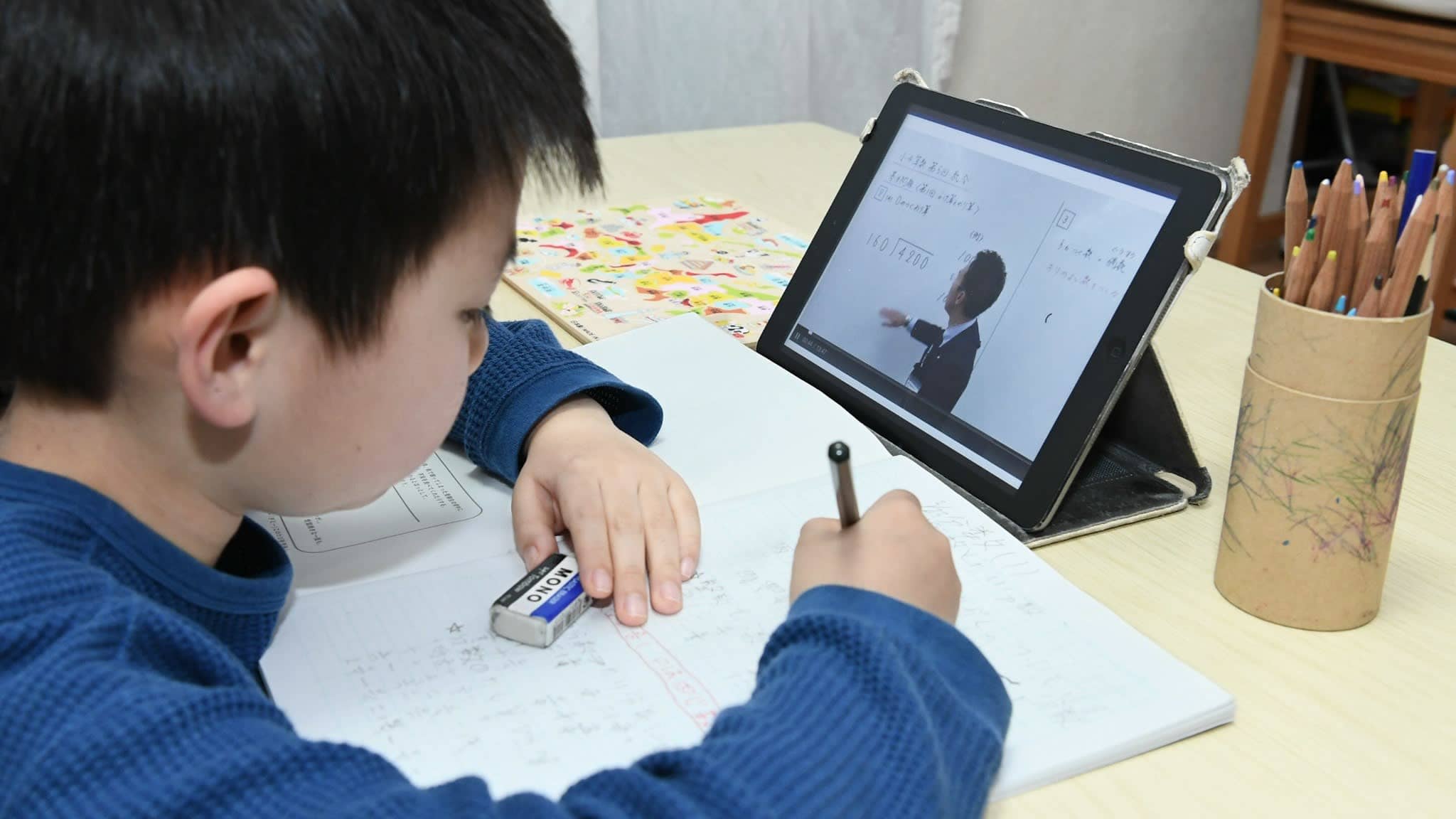
We’ll showcase our recommendations for the online learning you can introduce to your child this home-based learning period.
Recommended Online Learning Platforms
Online learning platforms are education portals with structured lessons available on their website.
The lessons on these portals contain short videos, manageable assignments, and many of them provide you with a certificate of completion after you pass the course.
These online learning platforms are great for picking up new skills or reinforcing your knowledge on various topics.
They need a small fee for learning, around $10 to $30 monthly, but this ensures that you can get high-quality lessons, even from the comforts of your chair.
Udemy

With Udemy, you’ll pay for the course rather than a monthly subscription. Possessing over 100,000 online courses, you will definitely find a course your child will be into.
Explore your child’s artistic, creative, technical or sporting interests with popular courses like Drawing for Kids.
Besides learning a passion, Udemy also has many courses that can improve your child’s academics, such as Creative Writing.
Priced around $20 USD for each course, Udemy’s courses are an affordable way to make online learning happen at home.
Khan Academy

An absolutely free online learning platform, Khan Academy provides videos for you to learn various topics at your own pace.
Khan Academy offers almost every academic subject on their website, from Maths to Science to even Economics.
Take note that since Khan Academy was developed in the United States, their content may differ from the Singapore education.
For common topics like Algebra and Reading, the content should be the same. So what are you waiting for? Learn away!
Online Tuition
While online learning platforms make learning accessible anytime, anywhere, your child may prefer the presence of a teacher to guide them in learning.
Is there a way to have the same benefits of home tuition, but accessible online?
Enter online tuition. Online tuition invites your child’s tuition teacher into the house via the internet using free video-calling platforms like Zoom, Webex and Google Meet.
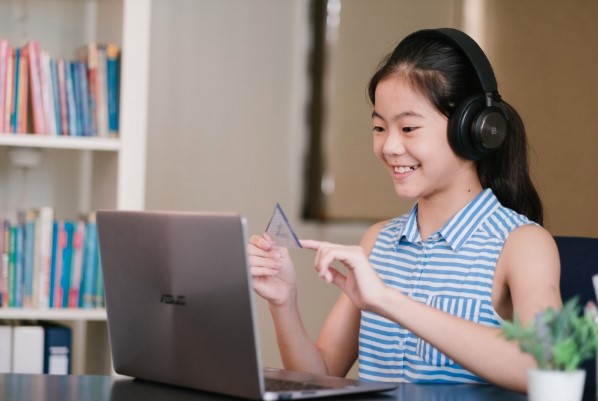
The experience of physical tuition lessons can now be replicated online as these video-calling platforms have additional features like digital whiteboards and file sharing.
Difficult concepts can be explained online and that assignments and homework can be distributed and submitted easily.
Don’t enjoy the presence of a stranger in the house? Online tuition can still prove itself to be effective in your child’s enrichment even after the resumption of face-to-face tuition lessons.

SmileTutor is now making online tuition even more affordable for parents and students with a reduced rate of around 10% from its usual tuition price.
You can get a full-time tutor for your Lower Primary child from as low as $25 per hour.
There isn’t an excuse to halt your child’s learning now that you’ve online learning readily available to you.
Learn more about how you can push your child to a Distinction with SmileTutor’s online learning offerings.
Conclusion: Learning at Home can be Easy, Effective and Efficient
Home-based learning, for all its merits, means that both parents and students have to make changes to continue learning.
These changes are not easy for anyone.
Parents may have to take time off to supervise their children. Children may find it harder to study at home. Teachers have less control over their classes and students.
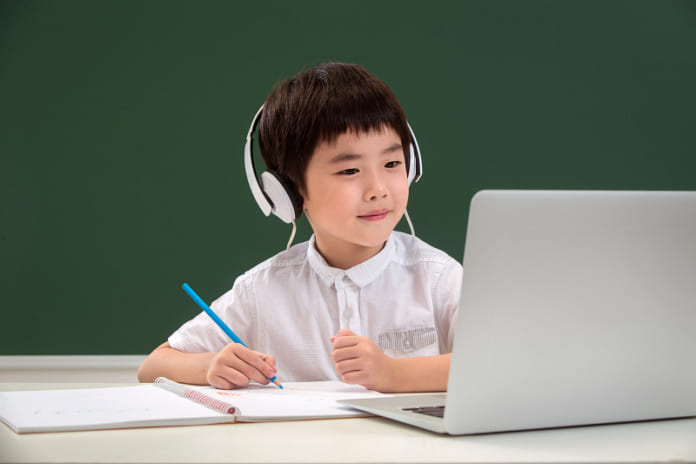
However, these changes will keep us safe and learning during these challenging times. They also push us ahead in making learning more efficient and effective.
Using the insights and tips from this guide, I’m sure both you and your child can adapt to home-based learning easily and score well in the future examinations.
Also, don’t forget to take some time off to play and relax with your child. Here are some ideas for home-friendly activities you can do with your kid at home.
Let us know what other tips we should include in this guide in the comments below!
